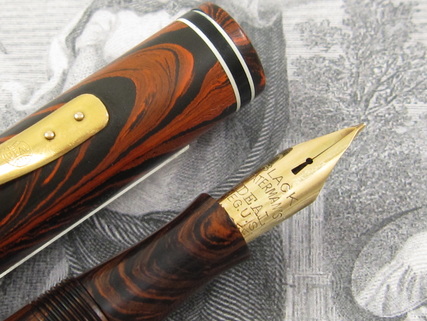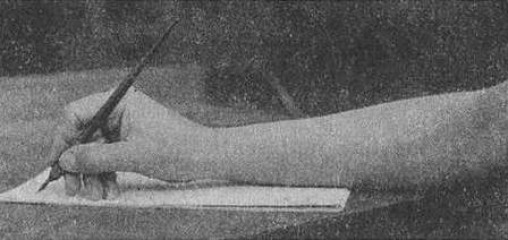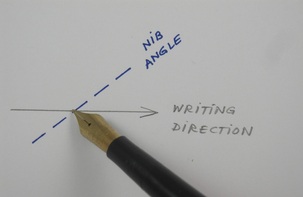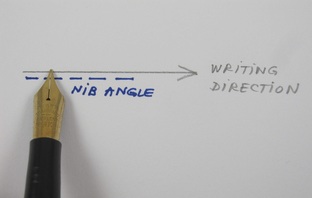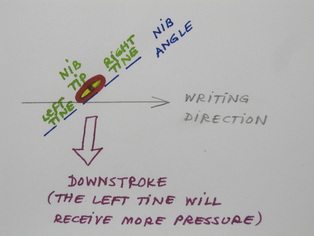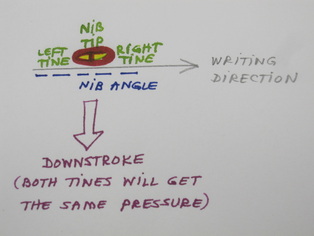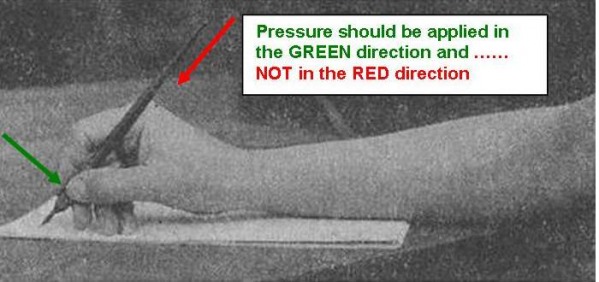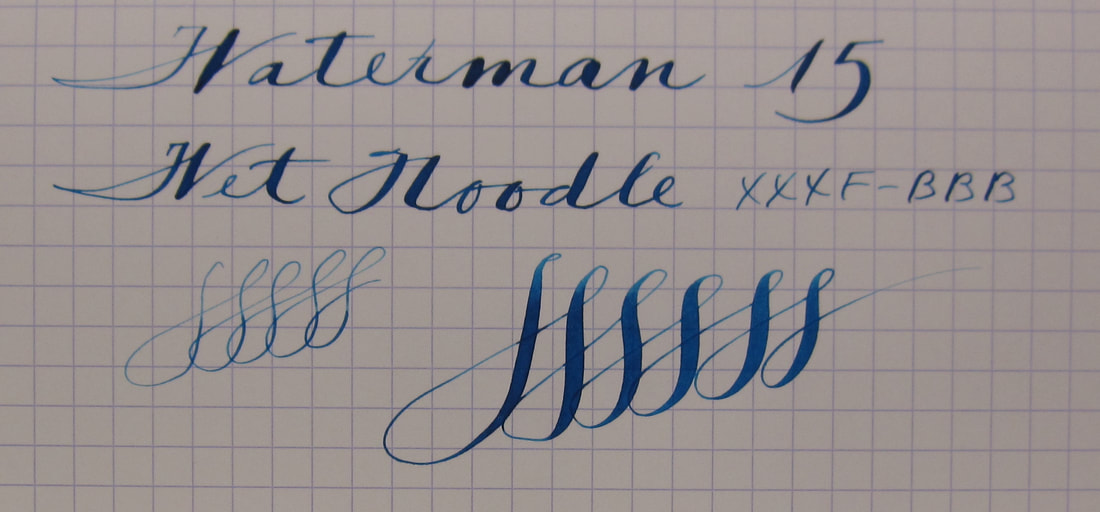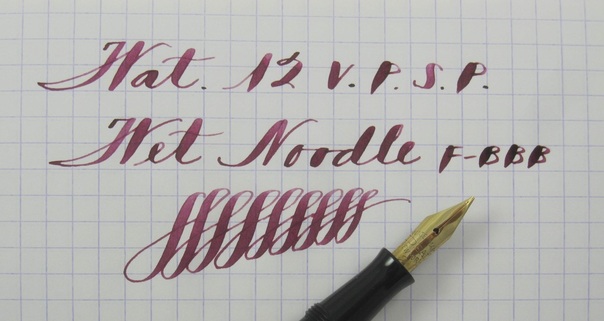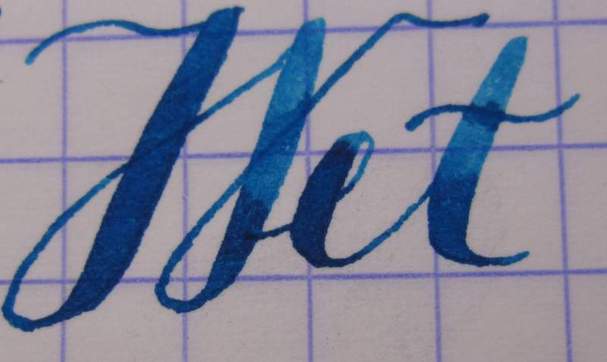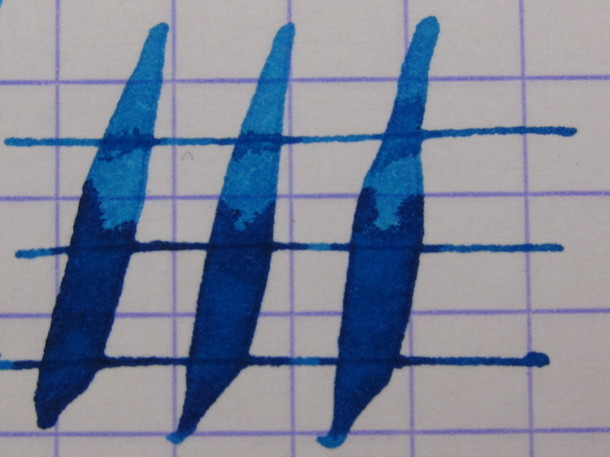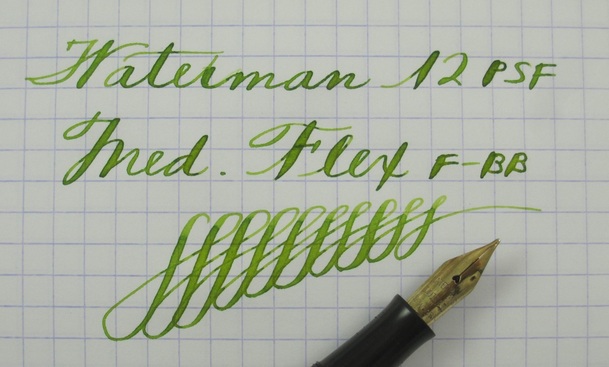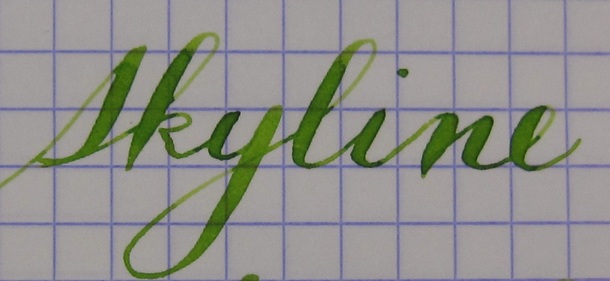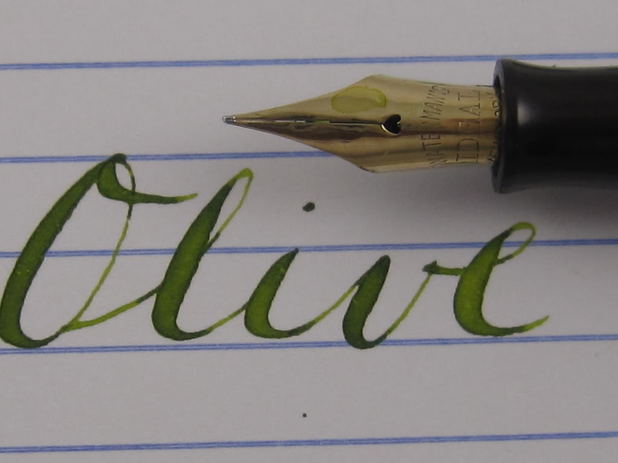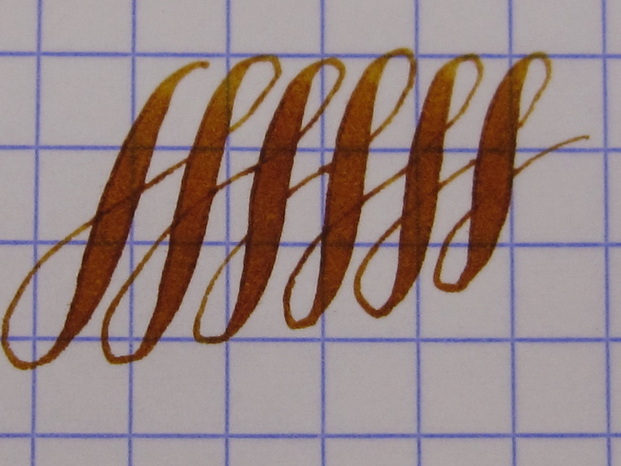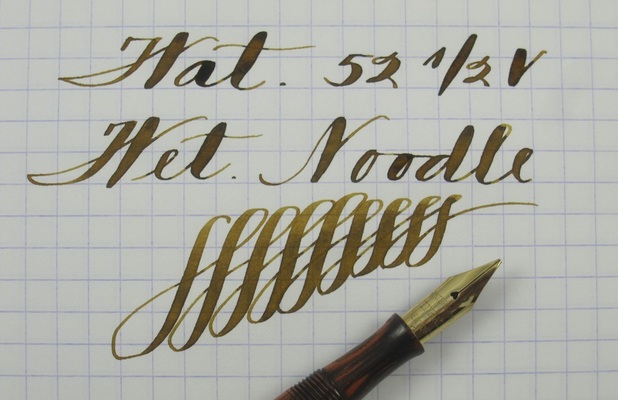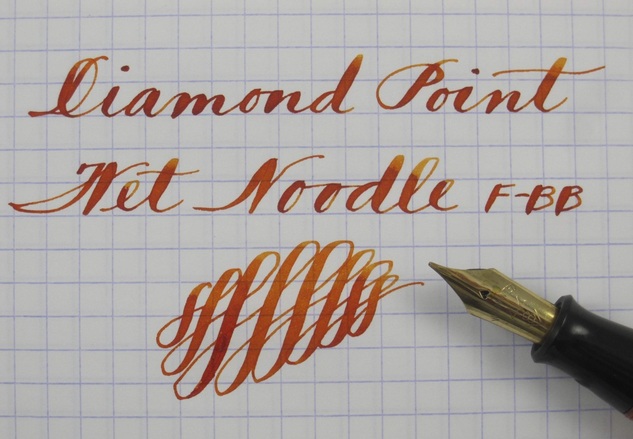How to Start Writing with Flexible Nibs
_______________________________________________________________________________________________
"I would love to get those thin and thick lines with a flexy nib, but how do I learn to write with one?"
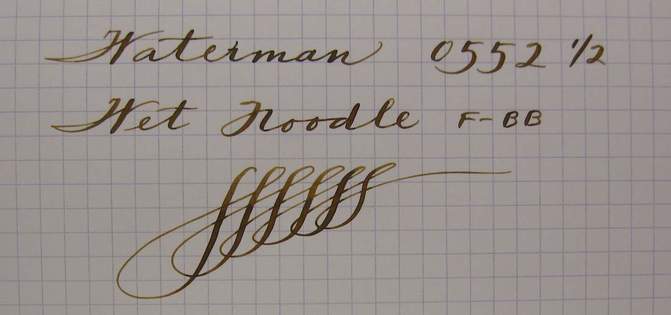
So you acquired a fountain pen with a flexible nib or are considering purchasing your first one, but do not know how to use it and do not feel comfortable venturing on your own to create those thick and thin lines without fear of damaging the pen or the nib.
I have great news for you: You are not alone on this quest. Writing with flexible nibs used to be the standard way of writing up until the late 19th century. Nowadays, very few indviduals are familiar with flexy writing. Flexy writing is virtually a lost art. I had multiple fountain pens with flexible nibs before I knew how to use one properly. I did not even know that some of my existing pens had wonderful flexible nibs!
The following are some very basic tips as to how to start writing with a fountain pen that has a flexible nib. It is relatively easy if you have a little patience while learning the basics. Once you get the hang of it, you will take off and gradually enhance your skills of flexy writing as you practice. This form of writing is extremely pleasurable and addicting ... not to mention that no other writing instrument can create the wonderful line variation and ink shading a fountain pen with a flexible nib can!!!
Basic Tips to Learn to Write with a Flexible Nib:
- Hold the pen properly. Different from a regular firm nib or a ball point pen, a pen with a flexible nib was intended to flex the tines of the nib when a certain degree of pressure is applied to the pen. In order for the tines of the nib to flex the way they were intended to do, proper positioning of the pen in your hand and paper is a must. Incorrect posture and pen handling will make it very awkward to get the nib to flex, will be difficult to control the nib/pen, and can also risk damage to the nib. For “over writers”, whether left or right-hand writers, it is extremely hard to write with a flex nib. It can be done, but that over-writer will have to find his/her own way to hold the pen and the angle of the paper to make it work. Do not be discouraged ... There are professional calligraphers who are over-writers. See the picture below for correct posture and pen holding techniques. Additional illustrations are available in the “Rare Books” section of the IAMPETH website.
- Angle of the nib in relation to the writing direction: Unlike italic or oblique nibs that do require you rotate the writing angle of the nib in relation to the writing direction, flex nibs require to be perfectly aligned in the same direction of the writing line. Failure to do so will cause one of the tines to get more pressure than the other, not allowing the nib to flex properly, give the impression the flex nib is faulty or scratchy and also involve the possibilities of misaligning the tines of the nib, bend them or brake them. This is one of the worst offenders I see in individuals attempting to learn to use and write with a flexible nib. Even individuals who have been using fountain pens with firm (rigid) nibs for decades are not aware they are rotating the nib. In a firm (rigid) nib, it is very likely the tipping of the nib is rounded. As such, firm nibs are more forgiving and rotating them should not become a problem. But with a flexible nib, the tines will spread apart and arch, making it an imperative those tines to be properly angled with the writing direction. Anything different from this will make it very hard to properly use and enjoy a flexible nib. The pictures below illustrate the correct and incorrect angle of the nib in relation to the writing line.
The two diagrams below illustrates what happens when improperly rotating the nib.
The red and yellow figures represent the tipping of the nib, making contact with paper.
To properly write with a flex nib, both nib tines must get the same amount of pressure on the down stroke. The diagram on the left shows how the left tine will get more pressure than the right tine. Flex nibs are soft, and when rotating them during writing, the left tine will restrain ink flow on the down stroke. Likewise, on sidestrokes and upstrokes, rotated nibs will be very prone to scratchiness. The diagram on the right side displays the proper angle of the nib when doing flexible writing. That proper angle will allow for both tines to get the same amount of pressure, will not restrain ink flow and will be less prone to feel scratchy on all strokes.
- Pressure should be applied against the barrel of the pen, and not between the nib and the paper. Keep in mind the purpose here is not perforating or nailing the nib against the paper, but to exert a certain degree of pressure against the barrel of the pen (almost in a perpendicular position with the barrel) so that the nib tines will experience some resistance on the paper, forcing the tines to spread while on the “down stroke”. See the following picture, illustrating the correct direction for pressure to be applied against the barrel.
- Pressure should be applied on the “down stroke.” Applying pressure on the “up stroke” can damage your nib.
- In order to properly flex the nib and maintain good control of the pen and the nib, you have to write at a relatively slow pace. Take your time and enjoy watching the nib flex its tines as it creates those beautiful thin and thick lines. Remember: Flexy writing is about art and not about speed. Later on, as you build your flexy writing skills and confidence, you can venture into writing with some of these nibs at a normal or faster speed.
- Until you become very comfortable and acquire a significant degree of proficiency handling a flexible nib, restrain yourself to apply the maximum pressure the nib was made for. Instead, limit yourself to applying less pressure than what the nib is capable of. The reason for this is very simple: Flexible nibs have softer tines than a regular firm nib. Not being familiar with flexy nibs, you may end up exerting more pressure than what the nib was made for ... and you will over sprung the nib.
- And above all ... HAVE FUN as you venture into the wonderful world of flexy writing!!!
I have listed links to some videos of individuals displaying their skills when writing with flexible nibs. You can access those videos from the Links section of this website. If you want to take it a notch higher, visit the "Rare Books" section of the IAMPETH website and use some of the vintage writing styles as your benchmarks to enhance your existing penmanship or learn a new writing style.
_______________________________________________________________________________________________
Ink Shading
The combination of certain nibs (usually Broads, Stubs and Flexible nibs), paper, inks and pressure applied to the nib can generate fantastic ink shading patterns. The wider the line, the more prone to display ink shading in these combinations. For me lately, writing with a super flex or "wet noodle" nib and generating substantial ink shading is "the ultimate writing experience." Check the following samples of ink shading:
_______________________________________________________________________________________________
Copyright © 2009 - 2023 Mauricio Aguilar. All Rights Reserved.
Copyright notice: All photographs, written descriptions, flex nib specification, and content appearing in this website are the property of Mauricio Aguilar. They are protected by U.S. copyright laws, and are not to be downloaded or reproduced in any way without the written permission of Mauricio Aguilar. Buying an item does not entitle the buyer to use the photographs, the written description and the flex nib specification information.
Copyright notice: All photographs, written descriptions, flex nib specification, and content appearing in this website are the property of Mauricio Aguilar. They are protected by U.S. copyright laws, and are not to be downloaded or reproduced in any way without the written permission of Mauricio Aguilar. Buying an item does not entitle the buyer to use the photographs, the written description and the flex nib specification information.
